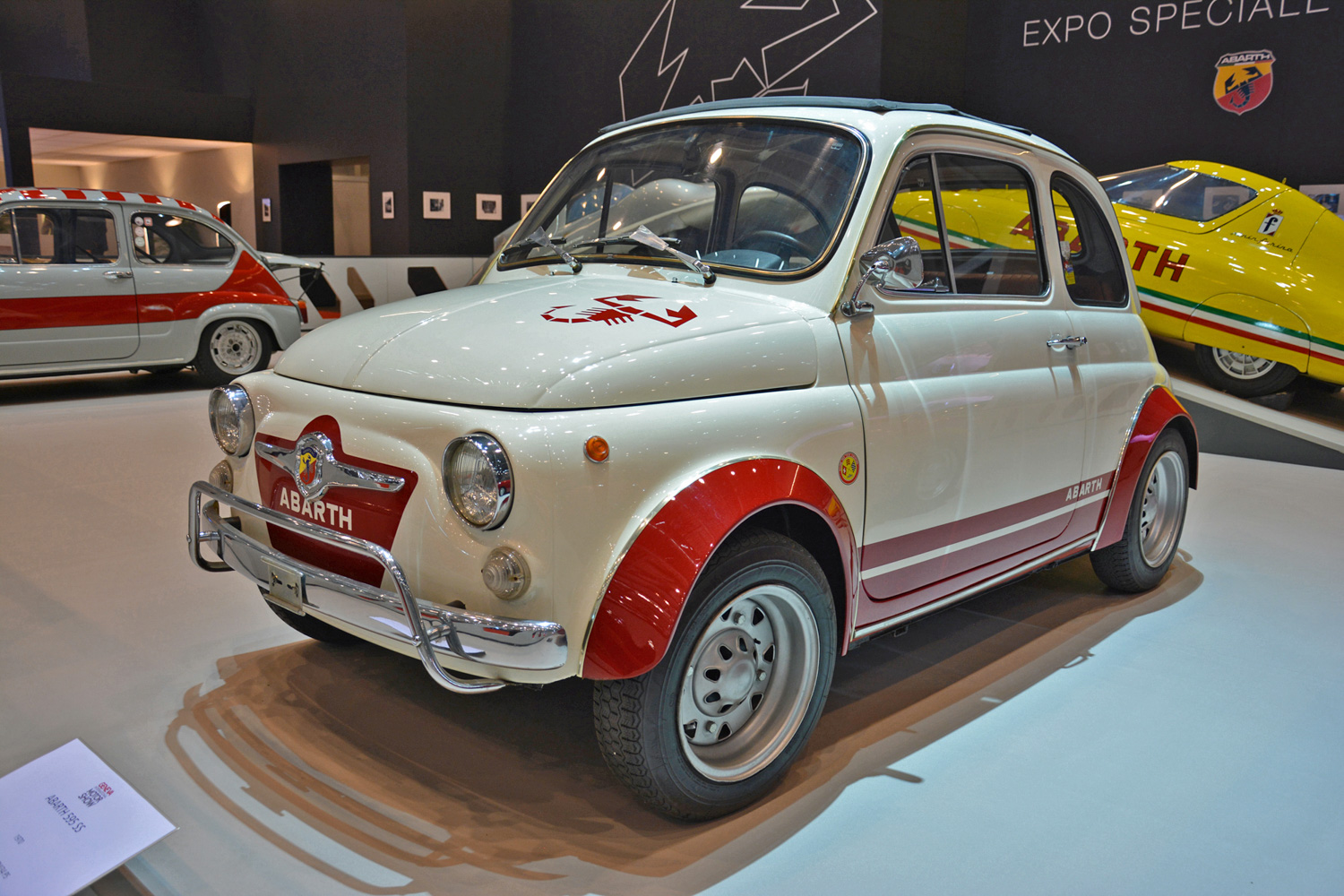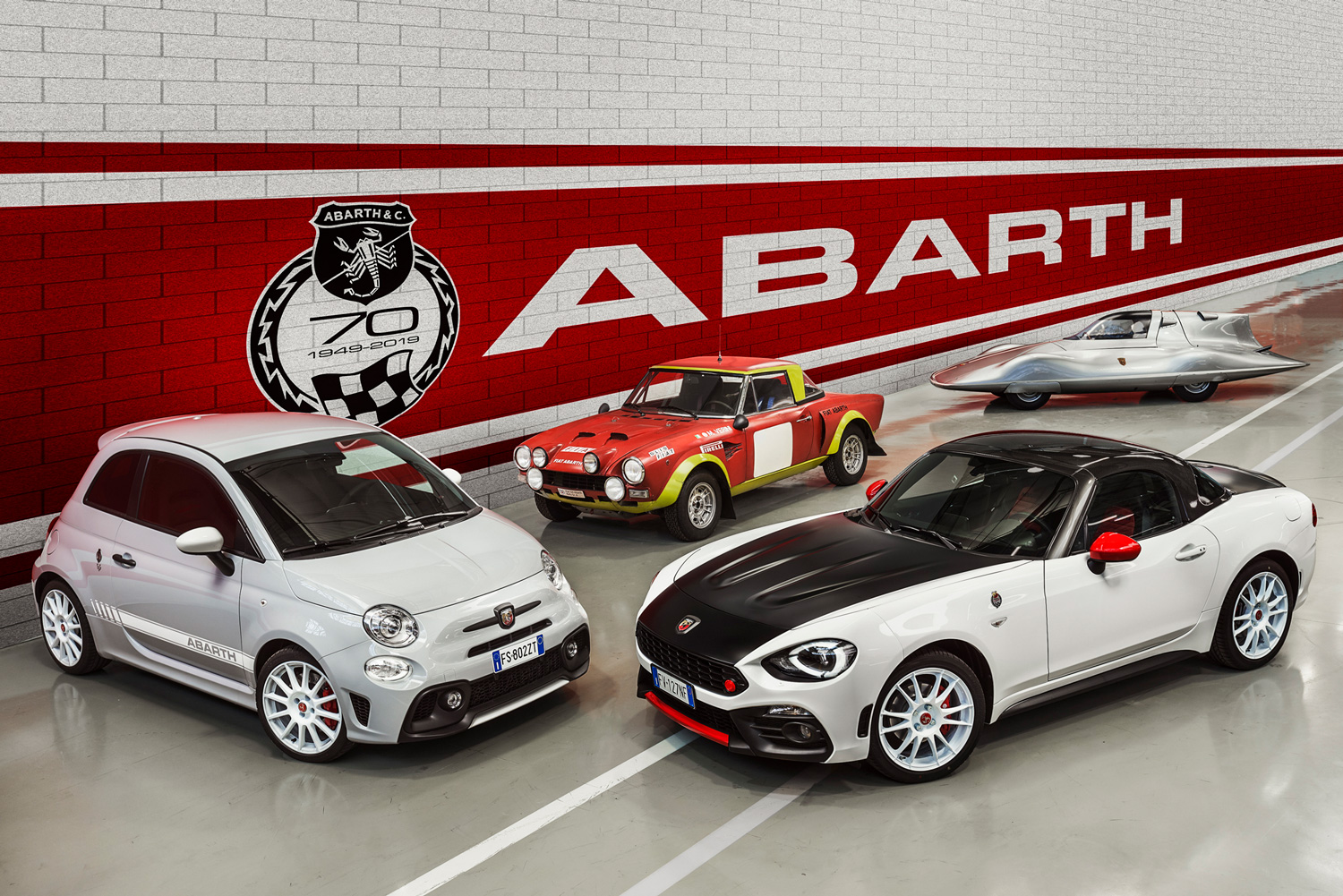Abarth celebrates 70 years
Abarth, the illustrious racing outfit founded by famed tuner Carlo Abarth and racer Guido Scagliarini, turned 70 last weekend. Over the years, the company has won more than 10,000 races, set 133 speed records, and claimed 10 world records. Carlo Abarth was born in November, 1908, making him a Scorpio, and his firm’s scorpion logo has graced some of the most exciting sports and racing cars to ever come out of Italy.
To celebrate the company’s milestone, every 2019 Abarth 595 (a hot-rodded Fiat 500) will wear 70th Anniversary badges, and Competizione models will feature seats embroidered with the commemorative logo.
For a brand so closely identified with Italy, it might surprise you that Carlo Abarth was Austrian. He was born Karl Albert Abarth to a Jewish family in Vienna, and developed his love of Italian racing machines as a teenager. He was just 17 when he landed a job designing motorcycle and bicycle frames for Castagna. After returning to Austria, he worked for Motor Tunn and started racing motorcycles; he won his first race in Salzburg in 1928. He won the European championship five times before an injury in an accident prompted him to give up motorcycle racing. He designed the sidecar rig he used to beat the Orient Express in a race along its 810 mile route from Vienna to the Belgian city of Ostend in 1934. He moved to Italy shortly thereafter, became an Italian citizen, and legally changed his first name to Carlo.

Abarth suffered serious injuries in a racing accident in the late 1930s in Ljubljana, Yugoslavia, and he spent many years in that country as Germany occupied Italy during World War II and exterminated many Italian Jews.
Abarth and Scagliarini started Abarth & C. on March 31, 1949. Their first car was the 204A Roadster, based on the Fiat 1100, and was an immediate success, winning the Formula 2 and the 1100cc Sport Italian championships.
In 1956 the Fiat Abarth 750, wearing a body designed by Bertone, set a number of speed and endurance records at the high-speed Monza track, including the 5,000-kilometer, 10,000-kilometer, and 5,000-mile records as well as the 48- and 72-hour benchmarks. As Abarth started concentrating on Fiats, the Italian automaker provided financial support, underpinning Abarth’s golden years in the 1960s when it set records and won numerous races.

Abarth started offering tuning kits and its famed Monza exhaust systems in the 1950s; the company eventually became an OEM supplier to most major European automakers. The company turned out more than a quarter of a million exhaust systems annually by the 1960s.
Fiat Auto bought out Carlo Abarth in 1971 and put his company in charge of Fiat racing. The Fiat 131 Abarth rally car won the manufacturer’s championship in 1977, 1978, and 1980. After switching to Fiat’s Lancia subsidiary, Abarth race cars won another 11 championships.
Carlo Abarth died on October 24, 1979, under the same Scorpio sign as his birth. In his lifetime, he supervised the development and production of 219 cars bearing the scorpion badge. His legacy continues to shape Fiat, which has used the Abarth name to denote its highest-performance models since 2008, including the Abarth 500, Abarth 695, and the 124 Spider Abarth.


